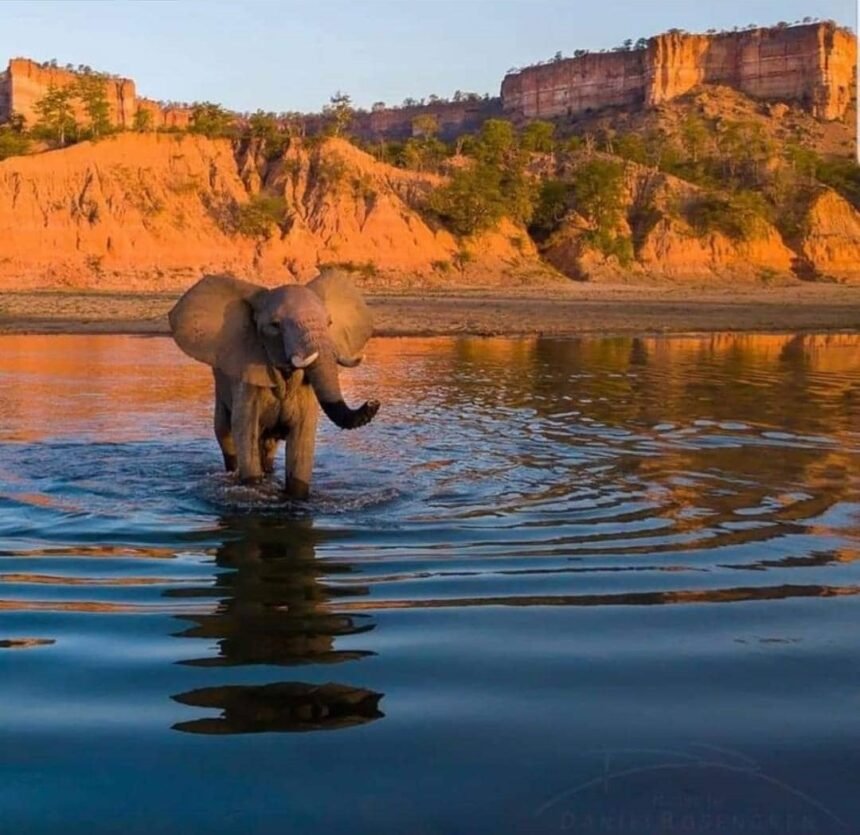By Beatific Gumbwanda
CHIREDZI – Zimbabwe is set to benefit an influx of tourists to its Gonarezhou National Park, Malilangwe Conservation Trust and Save Valley Conservancy through bridging the Great Limpopo Transfrontier Conservation Area (GLTCA) that is shared between three National Parks involving Gonarezhou National Park (Zimbabwe), Kruger National Park (South Africa) and Limpopo National Park (Mozambique).
With political borders rarely respecting ecological systems, the three Southern African countries (Zimbabwe, South Africa and Mozambique) signed an International treaty in 2002 in Xai Xai, Mozambique that gave birth to the Great Limpopo Transfrontier Park, which aims to straddle the three countries political borders while joining some of the established wildlife areas into a huge conservation area of around 35 000km2 which is managed as an integrated unit across the three nations.
Giving a presentation during a Chiredzi Rural District Council (CRDC) Full Council meeting recently, GLTCA National Coordinator Robert Nyamini said there were plans to open up crossing points between parks in the conservation area for easy travel of tourists from one park to another without too much hustles.
“We have plans to open up crossing point between parks in order for tourists to cross from one park into another without going through border posts which is stressful and time consuming.
“Most of our tourists do not have time to travel from one political border to another just to access a conservation area which is just across. This is going to be beneficial to Zimbabwe as Kruger National Park receives a million tourists a year as compared to Gonarezhou’s 15 000 tourists per annum,” he said.
Nyamini also spoke of the investment opportunities involved in the GLTCA in the Sengwe Chipise Corridor aimed at benefitting the communities surrounding the wildlife corridor when the bridge opens.
“The Sengwe Chipise Corridor has been benefitting animals since the formation of the GLTCA in 2002 and there is need to rope in the communities surrounding to benefit from this arrangement. We are consulting with necessary institutions to map the projects we can do for those affected during the formation of the corridor,” added Nyamini.
CRDC Chairperson Aspect Mashingaidze said there was a huge investment opportunity in the Sengwe Chipise Corridor, which various investors need to tap into.
“Ever since the formation of the GLTCA back then, communities have never experienced its benefits, but with your presentation, there seem to be vast investment opportunities by different investors as well as the communities around. “These include tented camps and development of the Malipati business center thereby creating vast employment opportunities for the locals like what we are doing at Bosman tented camps,” said Mashingaidze.
This park will provide jobs and opportunities to generate revenue for thousands of local people thereby improving the lives of the rural communities who will in turn further contribute towards biodiversity conservation by demonstrating the economic as well as social advantages to be achieved through conservation as an alternative and viable land use option.
The conservation area measures almost 100 000 km2 with key features including the Limpopo National Park which has a one million hectare park in Mozambique bordering with Kruger National Park bounded by both the Limpopo and Olifants rivers.
Kruger National Park has an estimated area of 18 989 square kilometers in the Southern side and Gonarezhou National Park with a 5 053 square kilometers in Zimbabwe. There is also Makuleke region, a region in South Africa bordering Kruger and Gonarezhou, Banhine and Zinave National Parks in Mozambique, Massingir and Corumana areas in Mozambique, Malilangwe and Save Valley Conservancies in Zimbabwe.
The three countries’ national parks meet at the same point called the ‘Crooks Corner’, which they all share.







